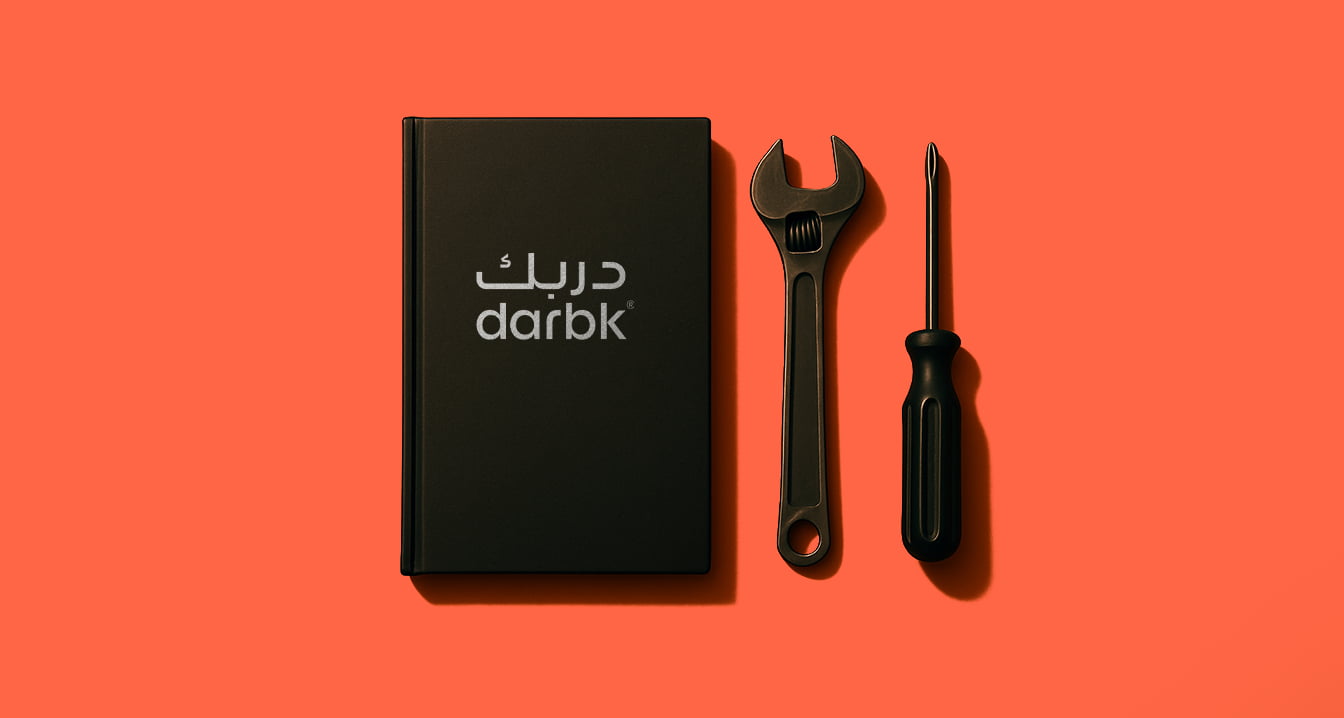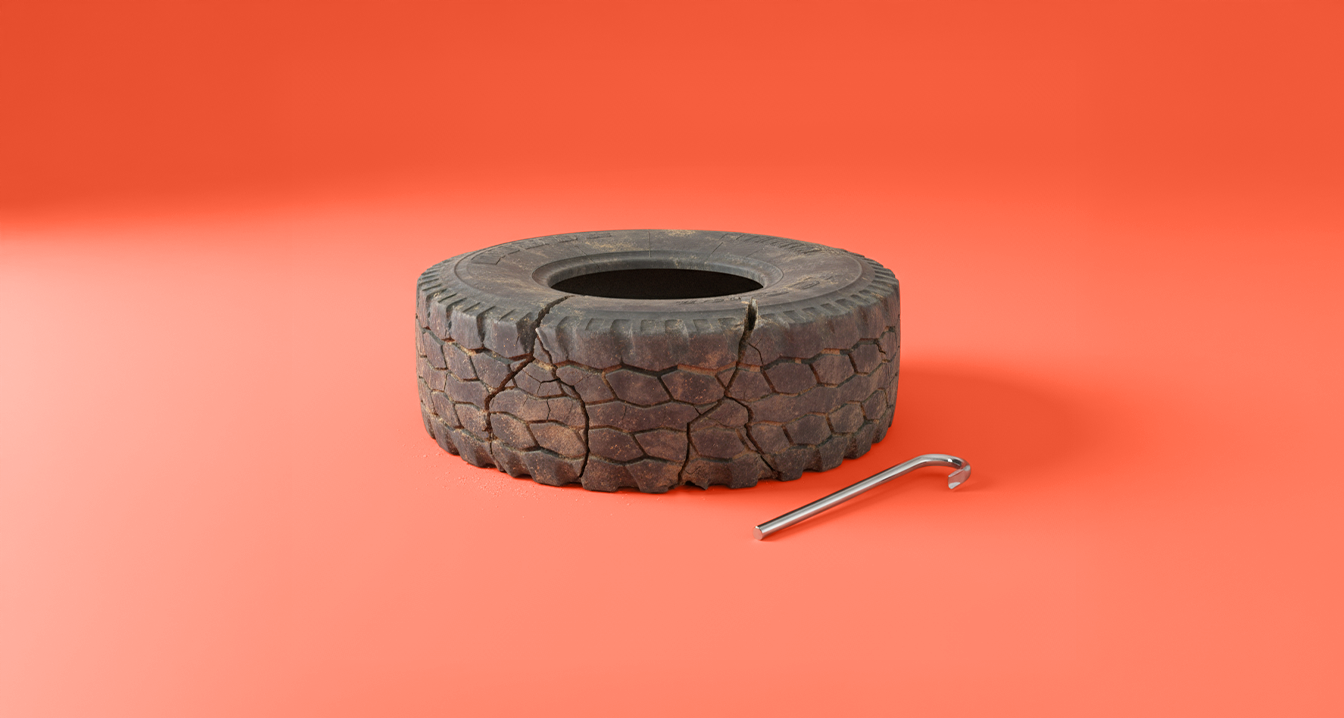In construction sites, mines and ports where work does not stop and pressure is relentless, heavy equipment covers play a crucial role in determining the efficiency, safety and life of equipment. Kufr may seem like just a rotating tire, but in fact it is the only link between thousands of tons and the surface of the earth.
In a world of hard work, any mistake in tire selection can cost you huge delays, serious failures, or even fatal accidents.
For this reason, the importance of choosing the right tire cannot be underestimated. Heavy equipment may cost hundreds of thousands of dollars, but a cheap or inappropriate tire may disable it completely. The tire is not just a part of the equipment, but a direct factor in productivity, fuel consumption, and speed of completion.
In this comprehensive guide, we will take you on a detailed and comprehensive tour of the world of heavy equipment tires to help you make the right decision, starting with the type of tire, through the method of loading, and ending with the latest smart technologies in the world of tires.
Types of heavy equipment cases:
Choosing the right type of tire starts with understanding the basic differences between them. Each type has characteristics and uses that suit the nature of the job, the weight of the equipment, and the operating conditions.
Some tires are designed to withstand harsh terrain, while others are designed to provide comfort or puncture resistance, so the first step in choosing the right tire starts with identifying these types carefully.
According to a report from Changsheng Tire, field trials show that choosing the wrong type of tire (such as using a pneumatic tire in an environment with hard metal floors) increases the rate of tire damage by up to43% Compared to using a solid frame in the same conditions.
- Pneumatic Tires (Pneumatic Tires):
It is most common in mobile equipment such as loaders and bulldozers. It provides driving comfort and good grip, but is more susceptible to punctures and explosions, especially in rocky environments.
- Solid Tires:
Hard tires are made entirely of rubber or solid compounds. They are used in high-risk environments such as scrapyards or metal mills, where drilling is absolutely not allowed. Their lifespan is longer but less comfortable.
- Foam filled tires (Foam Filled):
Foam-filled tires are a compromise between pneumatic and rigid, as the tire is filled with rigid foam to increase puncture resistance without complete loss of flexibility.
According to a report published by ForConstructionPros, equipment using foam-filled tires instead of air; in industrial waste environments, saw a 22% reduction in unplanned failures during the first 6 months of operation.
- Airless/Non-pneumatic tires:
Anaerobic tires are a new technology based on a mesh or rigid structure without the need for air. They are ideal in cases of limited or low-speed use.
Criteria for choosing the right tire:
After identifying the different types of tires, the most important step comes: determining the exact technical criteria that should be considered when choosing the right tire for each heavy equipment.
These criteria do not depend only on the shape or price of the frame, but also extend to durability, grip, heat resistance, and actual duration of operation.
Here are the most prominent factors that determine the quality and efficiency of a tire in tough environments:
- Load capacity (Load capacity):
There are two indicators for calculating the maximum heat load capacity of a tire depending on weight and speed:
The first (TMPH): What is meant is |ton x mile per hour|
The second (TKPH): What is meant is |ton x km per hour|
example: If the bulldozer weighs 50 tons and travels at 20 km/h, then:
TKPH = 50 x 20 = 1000
So you should choose a tire that can withstand this number or higher.
- Tread Pattern:
Deep-patterned tires such as (L5 or E4) give higher grip in rough terrain, while open patterns provide better drainage in mud roads.
- Wear resistance:
For heavy work, a frame made of rubber compounds reinforced with silica or black carbon is preferred to reduce the rate of wear.
- Temperature and environment:
In hot climates, you should choose a tire that can withstand temperatures exceeding 80 degrees Celsius, especially in Gulf mines and open construction sites.
- Total cost of ownership (TCO):
Don't just look at the price of a tire, but consider what is known as the Total Cost of Ownership (Total Cost of Ownership). A cheaper tire may seem tempting at first, but if it wears out quickly or causes the equipment to stop for frequent maintenance, it will be more expensive in the long run.
Therefore, you should calculate the expected operating hours of the tire, the rate of wear in the actual working environment, the costs of maintenance and repairs, in addition to any losses caused by unplanned equipment downtime due to tire problems. The smart investment is not in the initial price, but in sustainable performance.
- Stability and comfort:
Radial tires offer better grip and higher comfort than Bias but are more expensive. The main difference between the two types lies in the manufacturing method.
Bias tires are made with cross-layers of fabric that give the tire durability and rigidity, but cause stiffness during operation.
Radial tires have straight layers supported by a steel belt, which gives them greater flexibility, higher grip on the ground, and slower wear, making them the ideal choice for long and heavy operations despite their higher cost.
According to a study published by GMI Insights in 2023, using higher quality tires reduced total operating costs by up to 18% during the first 12 months of operation, compared to lower quality tires. The study indicated that equipment using tires considered in terms of TCO was more stable in performance and less likely to stop suddenly.
The difference between Bias and Radial:
Volvo CE data showed that the radial tires improved fuel consumption by 7% in heavy drilling machines.
Ground tire ratings (E3 vs E4 vs E5):
Not every ground tire performs the same task. Workers in construction sites and mines know that choosing a tire rating (E3, E4, E5) can make a big difference in performance, stability and cost.
These classifications depend on the depth of the pattern and its suitability for different environmental conditions, from flat lands to sharp rocks and mud roads.
Therefore, tires in terms of floor are classified as follows:
- E3 frames:
Medium depth of pattern, suitable for dry and flat areas, higher rotation speed but faster wear.
- E4 tires:
Deeper pattern, higher grip, intended for rough roads and mines.
- E5 tires:
Ultra deep pattern, very strong performance in rocks and harsh conditions, but heavy and expensive.
Therefore, always remember to choose a classification based on the operating environment (construction site, open mine, mud road, etc.).
Modern technology in covers:
In recent years, the tire industry has witnessed an amazing development in the field of technology. Tires have become not just a rubber ring, but an integrated part of a smart system that monitors performance and helps improve operating efficiency and reduce risks. Digital innovations and the development of artificial intelligence have contributed to introducing unconventional solutions to raise tire life, reduce accidents, and make the most of every operating cycle. These technologies include:

- Smart Tires:
These tires have sensor chips that measure pressure, temperature, load, and even the tilt of the tire.
- Tire Pressure Monitoring System (TPMS):
It increases tire life by up to 20% and prevents sudden explosions.
- Airless techniques:
Like the Michelin Tweel and the Bridgestone Air-Free Concept, they provide stable performance without holes and are currently used in low-speed equipment.
- Artificial Intelligence and Data Analysis:
Modern systems that rely on machine learning to predict when a tire will wear and send an alert for preventive maintenance.
Figures and studies on the global market:
To understand the importance of tires in the industrial and construction sector, it is necessary to take a look at the global market for this specialized industry. The following statistics reflect the growth in demand for heavy equipment tires and highlight the challenges and opportunities in this field, including market size, regional control areas, and the most common causes of faults. Several studies and analyses have been conducted that have concluded the following:
- The size of the heavy equipment market in 2024 was 21.2 billion dollars and is expected to reach 31.3 billion in 2033.
- The Asia-Pacific region controls 42% of the global market, followed by North America with 27%.
- 60% of heavy equipment failures are due to tire problems, according to a report issued by OSHA.
How do you choose the right infidelity?
After learning about the types, specifications, and techniques available in the world of heavy equipment cases, it is time to apply this information in practice.
Here are practical steps to help you make the right decision when choosing a infidelity, taking into account the operating environment, the type of assignment, and the available budget:
- Determine the nature of the land: rocky, clay, sandy, artificial.
- Calculate the operating weight of the equipment and its maximum load.
- Choose an E, L, or G rating depending on the task type.
- Compare Radial and Bias by work environment and budget.
- Inquire about after-sales service, warranty, and fast replacement.
When you apply these guidelines and smart choices, you will see a clear difference in the overall performance of the stomach, as:
- Unexpected crashes will decrease.
- It will reduce operational costs.
- You will achieve real savings in fuel consumption.
- Finally, you will keep your stomach in continuous and productive working condition.
Tips to increase tire life:
A tire is not a one-time investment. It is an operational part that is affected by usage and maintenance behavior. Many of the faults that affect heavy equipment are due to simple negligence in tire care.
Therefore, we will provide you with a set of practical tips that will help you maintain the efficiency of the tire and extend its life as much as possible.
- Check air pressure daily.
- Do not overload your stomach.
- Clean the tire from oil and gravel after the work is finished.
- Watch for irregular wear: it is an indication of a balancing or suspension problem.
- Use frame run logs to track performance.
Applying these tips does not mean delaying the replacement date of the tire, but will translate into tangible results such as:
- Reducing the number of sudden breakdowns.
- improved fuel consumption.
- Raising the efficiency of daily performance.
- Reduce downtime.
In other words: good tire maintenance and selection equals more productive and less expensive work
The role of Darbek tires in the heavy equipment sector:
In light of all these technical requirements and environmental challenges, “Darbek” tires stand out as a reliable choice designed specifically for tough environments in the Kingdom and the region.
Derbek has succeeded in developing a specialized range of tires for heavy equipment, characterized by their high ability to withstand large loads, resistance to heat and wear, with strict adherence to the highest quality standards.
Darbek tires, which have the Saudi quality mark SASO, have proven their superiority in harsh work environments such as construction sites, open mines and manufacturing workshops. They have helped companies reduce downtime and raise equipment efficiency by a percentage. All these results are supported by field studies monitored within actual operating contracts.
Because Darbek is fully aware that each project has its own specific circumstances, it does not provide only one product, but also provides specialized pre-sales consultation and technical follow-up service after installation in a way that ensures continued performance with the highest possible efficiency.
Always remember that choosing your training framework in this sector does not only mean buying a product, but investing in the stability of your project, the safety of your employees, and the sustainability of your business.
In conclusion...
Choosing a heavy equipment cover is not a random decision... it is a long-term investment in work efficiency, driver safety, and cost reduction.
With the significant development of this industry, you have many smart and customized options for each type of work and environment.
Your understanding of standards, your knowledge of classifications, and your adoption of modern technology will make your work easier, safer, and more profitable.
Choose wisely, examine carefully, and start each project with tires you trust, because the tire is the foundation of achievement in every solid ground.







